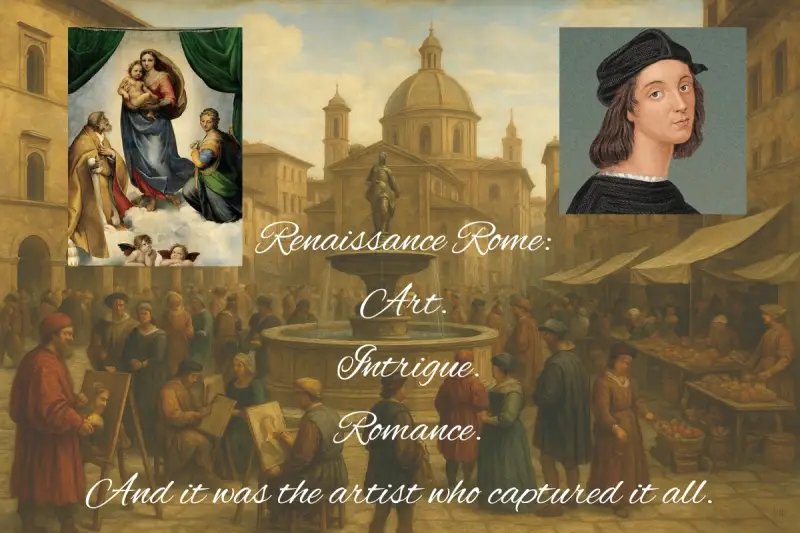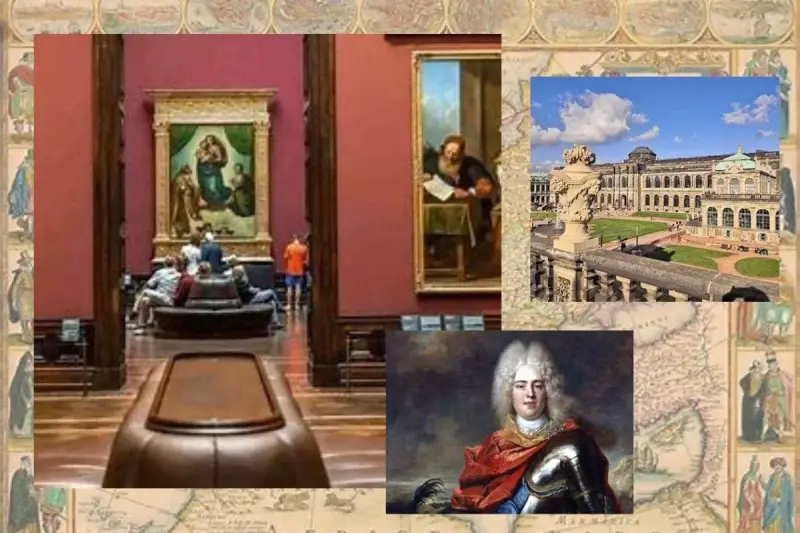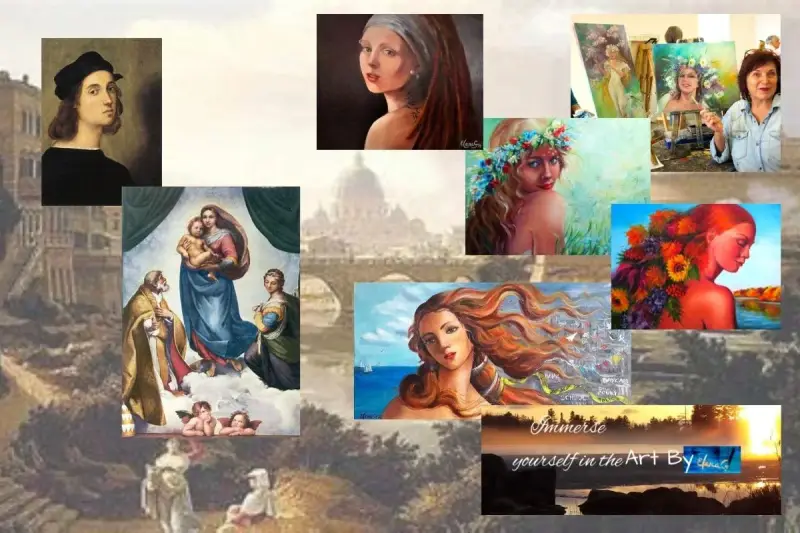
In a city of power and beauty, one artist seeks the divine in the woman he loves.
Raphael’s Rome: Romance, Wit, and the Making of the Sistine Madonna.
Part two.
Rome: A City of Intrigue, Wonder, and Everyday Life.
Rome was loud and full of life as Raphael painted.
There were bakers, cloth dealers, herbalists, musicians, and neighbours conversing in the street market.
The courtyards were full of laughter, fights, and rumours about papal politics. Nobles walked across the city in velvet, while peasants walked barefoot.
Raphael felt comfortable with all of them. He liked going to fancy dinners, but he also liked to go alongside alleys and sketch ordinary people: kids, moms, shopkeepers, beggars, soldiers, and lovers.
In the meantime, artists argued vehemently in workshops and bars over whether Michelangelo would ever complete the Sistine Ceiling.
Would Leonardo come back from Milan with a new "miracle technique"?
Was it true that Raphael was secretly drawing out blueprints for St. Peter's?
There were a lot of whispers going around in Rome. Raphael liked to watch people and then depict truths that went deeper than gossip.

...from the supposed interview from 1513.
Interviewer: Rome must be alive with intrigue and action. What is the environment like, and what is everyone talking about?
Raphael: Oh, Rome is as bustling as ever! People chatter about everything, from political connections to the most recent creative creations. With Pope Julius II's health deteriorating, significant debate surrounds his legacy. Despite this, there is a feeling of regeneration, a confidence that art and religion can change the world.
Rivals, Mentors, and Friendly Fire.
Raphael glided effortlessly amid giants. Leonardo taught him the delicate enchantment of sfumato, which Raphael said was "like discovering the world's hidden breath."
Michelangelo's impassioned grasp of anatomy motivated him, even if their arguments might rock the walls.
Raphael liked both of them, but he never aspired to be either. His genius was in making art that seemed to connect heaven and earth.
He stated, "Art must lift the soul." "But it must also keep the heart warm."
An excerpt from the alleged interview...
Interviewer: You have been painting this for two years. What inspirations or difficulties have you faced throughout this time?
Raphael: Inspiration is abounding in Rome. The antique statues, architectural grandeur, and even my friends' spirited conversations spark the imagination. Challenges? Only the limitations of my ability exist, and I seek to exceed them every day. The impact of masters such as Leonardo da Vinci and Michelangelo has likewise been enormous. Leonardo's mastery of sfumato and Michelangelo's anatomical perfection have established standards we strive to achieve. I've had the opportunity to chat with both in previous years. With Leonardo, it was like discovering the world's mysteries; with Michelangelo, it was a furious debate about shape and power.

An excerpt from the alleged interview…
Interviewer: How do you see your job as an artist in these times? Is your job rewarding, and where do you see yourself in the future?
Raphael: Art must raise the soul, bringing the divine closer to humanity. I take my position very seriously. Am I fulfilled? In many ways, yes—my job brings me delight. However, there is always more to create and more beauty to discover. In the future, I want to continue serving the Church while also pursuing architectural interests. Pope has approached me about directing the building of Saint Peter's Basilica, which would be a massive undertaking.
Interviewer: Finally, Maestro, your demeanour is introspective rather than impetuous. Do you envision yourself like this? Please share a lighthearted moment from your work.
Raphael: You did an excellent job at capturing me. I think more than I hurry, which does not affect my sense of humour. Was it a moment of joy? While drawing the cherubs, I spotted two toddlers leaning against a window and echoing my early sketches. Their silliness caused laughter in the studio and inspired the mischievous creatures underneath the Madonna.

Legacy of the Sistine Madonna: A Journey Across Centuries.
The Sistine Madonna went across palaces and civilizations long after Raphael died young. King Augustus III of Poland bought it in 1754 and brought it to Dresden, where it amazed Europe's smartest people.
Today, it is at the Gemäldegalerie Alte Meister, where people from all over the globe come to see it. This shows that Raphael's message of love, elegance, and divine sensitivity is timeless and knows no boundaries.
His impact may be seen everywhere, from the posters of cherubs to the delicate lines of contemporary figurative art.

Conclusion: Raphael’s Gentle Wisdom.
Raphael was a romantic, had a strong mind, and had a unique talent: he could lift people's spirits without ever forgetting about the ordinary people.
The Sistine Madonna is more than simply a religious symbol; it is a symbol of love, amazement, and the idea that beauty may bring us closer to God.
You may also check out the Artwork Gallery at artbyelenag.com to see modern works that are influenced by the masters.

I say goodbye to you, my dear reader, until the next story.
Nik.
P.S.
I came up with the blog article concept and edited it, and I used ChatGPT to compose the text.
All images were created with canva.com
Add comment
Comments